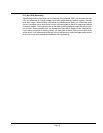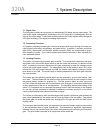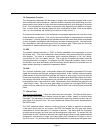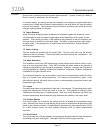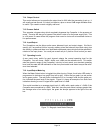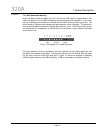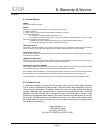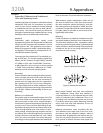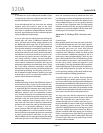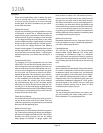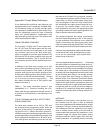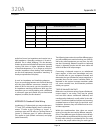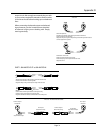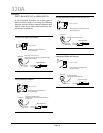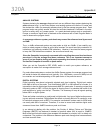
320A
Compellor
Page 27
is cancelled out by the dierential amplier. Figure
1 illustrates how the hum is induced into both wires
equally and therefore is cancelled out.
Since the balanced line has wires that are twisted
together, each wire tends to pick up the same
amount of induction from external sources. Induction
will create no signicant voltage dierence between
the wires, hence the noise (or hum) will not be picked
up by the dierential input stage.
It can be seen that the signal generator driving the
twisted pair will cause a dierence between the
wires, and that signal will be readily picked up by
the dierential input stage. One of the beauties of
the balanced line is that it is completely independent
from ground. Nothing is connected to ground at all,
nor does it care about ground. Nevertheless, most
professional cable has an overall shield wrap that is
intended to be connected somehow to ground. You
may well ask why, and the answer is less than glori -
ous. Simply, nothing is perfect, not even balanced
cable. Under some circumstances the shield can over -
come extreme interference problems that can’t be
adequately rejected by the twisted pair alone. Things
like 2-way radios, television transmitters, and light
dimmers can induce very heavy interference that may
be reduced by shielding. You are going to nd virtu -
ally all balanced cables include a shield so you need
to deal with it, even if it is not actually needed. That
subject will be addressed a little later.
Unbalancing
Unbalanced wiring works a little dierently. Figure 2
shows the basic plan. In this case, the wires are not
twisted, they are coaxial. The unbalanced input stage
is somewhat like the balanced input stage because
amplies a dierence signal, but this time it is the
dierence between two non-symmetrical conduc -
tors. To make things even less symmetrical, the outer
conductor is connected to ground at both ends. The
principle is that the outer shield conductor shields
the inner conductor from induced noises. This can
only work well if the cable is relatively short and the
ground at each end of the cable is somewhat equal,
i.e., there is no “grounding dierence” that can
cause current to ow through the shield conductor.
Grounding dierence is a serious problem in studios,
because often the equipment grounds are connected
to power outlet grounds, and there can be a sig -
nicant dierence of ac voltage between alternating
wall outlet grounds. For this reason, unbalanced sys -
tems can sometimes never be made hum free, and
just changing one piece of equipment in a studio can
cause hum to appear somewhere else. When you are
using unbalanced gear, it is a very good procedure
to power all your equipment from one large power
isolation transformer. At the very least, make sure all
equipment is powered together o the same distri -
bution panel circuit (same circuit breaker).
Appendix B: Dealing With Grounds and
Hum
Ground Loops
Many people equate this term with hum, and that’s
just about the bottom line of it. If you have a ground
sensitive system, like unbalanced audio equipment
for example, then hum will result from ground
currents that ow from the ac power system. It is
sometimes very dicult to isolate and stop ground
currents between unbalanced equipment, but it is
quite easy to clean up balanced gear. That’s why pro
gear is always balanced! The cost of balancing is that
of more expensive connectors, cable, and electronics
but the cost is worth it when you depend on your
audio quality. That’s why the Model 320D is equipped
with a fully balanced I/O. Now that we’ve sold you on
only using really expensive pro gear, lets show you
how to get away with the really cheap stu! At least
from the standpoint of killing ground hum.
A ground loop is an ac current that has become
routed through your audio ground system. The cur -
rent comes mainly from ground potential dierences
that exist between dierent wall outlets that return to
opposite phases at the power distribution panel. Sec -
ondarily, however, many pieces of equipment contain
line lters and transformers that leak a small amount
of ac power into the chassis and ground return.
You may once have had the experience of getting
zapped by touching two pieces of gear at the same
time. That illustrated the ground loop eect - -
straight through you! No matter what you do, you
may not be able to prevent some of your equipment
from generating ground currents. The most likely
culprits are digital products because they use switch -
ing power supplies that require heavy line lters to
prevent conducted EMI from going out of the box.
Filters so employed very often take the ground leak -
age current right up to the UL safety limits. Although
it won’t kill you, that is a lot of ground loop current
for audio cables to handle.
Appendix B



